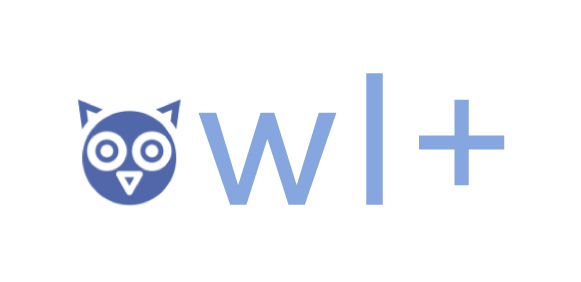7 Public spaces and media
Linguistic landscape
Signage in Fryslân
The (in)visibility of Frisian in the landscape
Can you tell when you’ve crossed into Frisian territory by looking at the language you see on signs? The language on public signs (road signs and street names, signs on government buildings) and commercial signs (advertising billboards and shop signs) is called the linguistic landscape. It fulfills two key functions: it informs people of the linguistic characteristics of the region, but it also serves an important symbolic function. As Landry and Bourhis state: ‘the absence or presence of one’s own languages on public signs has an effect on how one feels as a member of a language group within a bilingual or multilingual setting’ (1997: 24-25). This means the linguistic landscape has a legitimizing effect on a language.
So, how legitimate is the Frisian language, looking at the linguistic landscape? As we’ve seen in chapter 1.3, the language is institutionally well-supported. But the linguistic landscape doesn’t really reflect that. In the province’s capital Ljouwert, only 3% of shop signs are Frisian, while 2% combine Frisian and Dutch (Cenoz and Gorter 2006). In rural areas, Frisian signage is used more than in urban spaces (Edelman 2014; Trincheri 2015), but even there Dutch overrules. In fact, most bilingual signs are Dutch-English rather dan Dutch-Frisian (Trincheri 2015). Frisian participants in a survey indicated a desire for more Frisian visibility in the streets (Kuipers-Zandberg and Kircher, 2020).
Takeaways
If you were unfamiliar with the study of languages in public spaces, browsing the map probably gave you an idea of the amount of languages that surrounds us every day and the different places where we can find them.
- Have you ever considered the linguistic landscape in your region?
- What does it look like?
- Do you feel represented by what you see?
- How could you contribute to shaping the linguistic landscape?
How is Frisian used in media?
You can find Frisian in different settings, including print and online media, radio, and television. In this chapter you will learn about some of the channels that share their information in Frisian.
The regional broadcasting service Omrop Fryslân operates in Frisian. The broadcaster’s website offers the content in Frisian and Dutch (https://www.omropfryslan.nl/fy). When listening to the broadcaster’s radio programme, you will hear both languages as well. Often the radio presenters speak Frisian and while (some of) their interviewees will reply in Dutch, and radio listeners get to experience to bilingual culture in Fryslân.
One event that is specifically dedicated to the Frisian language is the televised (by Omrop Fryslân) competition It Grut Frysk Diktee, which takes place every year. Different teams compete with each other in this dictation contest.
This year’s (2023) teams consisted of Frisian artists, journalists, members of the clergy, student teachers for primary education, and a group of young people from a keet (typically an old caravan or cabin used on the countryside by youths to meet up).
The video below gives you an insight into how the dictation competition was carried out this year.
Social media
Omrop Fryslân regularly creates Frisian GIFs (Graphics Interchange Format), which are immensely popular and have had more than 1 billion views (giphy.com).
Particularly middle and young aged groups use GIFs as a fun way of reacting to friends’ messages on services such as WhatsApp or Telegram. Here are two examples with reference to pop culture.
But of course there are also a lot of GIFs featuring athletes, TV presenters or other people who are known through local media.
There are also content creators on other social media platforms sharing their content in Frisian and immersing their audience in the language, like vloggers on YouTube.
Takeaways
Is the situation of media availability in your language comparable? Are there similar activities carried out?
- In the language settings of your devices – can you choose your language?
- Do applications and platforms (think of Windows, Office, or Instagram) support your language?
- Are means of communication such as GIFs or memes frequently used in your language?
References
Cenoz, J. & Gorter, D. (2006). Linguistic landscape and minority languages. International Journal of Multilingualism, 3(1), 67-80. doi: 10.1080/14790710608668386
Edelman, L. (2014). The presence of minority languages in linguistic landscapes in Amsterdam and Friesland (the Netherlands). International Journal of the Sociology of Language, 228, 7–28. doi: 10.1515/ijsl-2014-0003
Kuipers-Zandberg, H. & Kircher, R. (2020). The objective and subjective ethnolinguistic vitality of West Frisian: Promotion and perception of a minority language in the Netherlands. Sustainable Multilingualism, 17, 1-25. doi: https://doi.org/10.2478/sm-2020-0011
Landry, R. & Bourhis, R.Y. (1997). Linguistic landscape and ethnolinguistic vitality. Journal of Language and Social Psychology, 16, 23–49. doi: 10.1177/0261927X970161002
Trincheri, M. (2015). Linguistic Landscape in Fryslân: a comparison between Ljouwert and Jorwert. Available at: https://www.academia.edu/11616885/Linguistic_landscape_in_Fryslân_a_comparison_between_Leeuwarden_and_Jorwert
